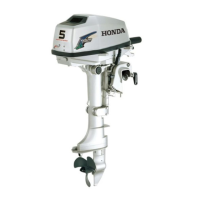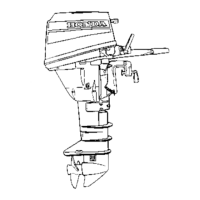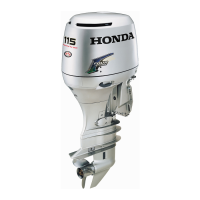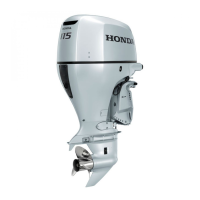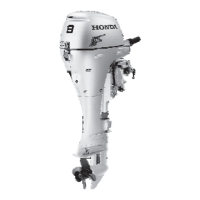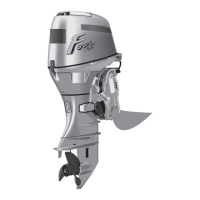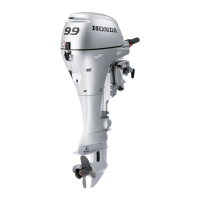
Do you have a question about the Honda Outboard Motor BF50 and is the answer not in the manual?
| Full Throttle RPM Range | 5000-6000 RPM |
|---|---|
| Rated Power | 50 HP |
| Starting System | Electric |
| Cooling System | Water Cooled |
| Lubrication | Wet Sump |
| Gear Ratio | 2.08:1 |
| Exhaust | Through Propeller |
| Trim Range | -4° to +16° |
| Displacement | 808 cc |
| Fuel Delivery | Programmed Fuel Injection |
| Propeller | Optional |
| Fuel | Unleaded Gasoline (86 octane) |
| Tilt Range | Up to 70° |
| Shaft Length | 20 in (Short) |
| Steering | Remote |
| Engine Type | 4-stroke |
| Alternator | 12V 6A |
Details on correct placement of the outboard motor on the boat's stern.
Ensuring the correct transom height for optimal motor performance and cooling.
Steps for securely attaching the motor's stern bracket to the boat's transom.
Adjusting the motor angle for parallel alignment with the water surface.
Procedure for adjusting the motor angle using the adjusting rod.
Procedure for checking and maintaining the correct engine oil level.
Instructions for verifying and refilling the fuel tank.
Ensuring propeller security, stern bracket installation, and steering operation.
Steps for connecting fuel lines, priming, and initial engine start.
Alternative method to start the engine using a spare starter rope.
Explanation of forward, neutral, and reverse gear selection and operation.
How to operate the steering handle and adjust steering friction.
Guidance on throttle control and weight distribution for smooth cruising.
Steps for tilting the motor for shallow water or storage.
Details on using the DC receptacle for charging and lighting systems.
Considerations for engine performance and modifications at high altitudes.
Inventory and location of tools and spare parts provided with the motor.
Step-by-step guide for draining and refilling the engine oil.
Procedure for checking and changing the gear case oil.
Instructions for inspecting, cleaning, and replacing spark plugs.
Methods for cleaning and flushing the outboard motor after use.
Identification of parts requiring regular lubrication.
Procedure for replacing a shear pin to protect the drive mechanism.
Steps to take for immediate servicing after a motor has been submerged.
Guidelines for replacing the fuel strainer to prevent engine issues.
Troubleshooting steps for an engine that fails to start.
Diagnosing and resolving issues related to engine overheating.
Procedures for resolving warranty issues and contacting customer support.
Contact details and required information for customer service inquiries.
